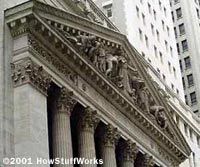Tyco Background
Tyco International has operations in over 100 countries and claims to be the world's largest maker and servicer of electrical and electronic components; the largest designer and maker of undersea telecommunications systems; the larger maker of fire protection systems and electronic security services; the largest maker of specialty valves; and a major player in the disposable medical products, plastics, and adhesives markets. Since 1986, Tyco has claimed over 40 major acquisitions as well as many minor acquisitions.
How the Fraud Happened
According to the Tyco Fraud Information Center, an internal investigation concluded that there were accounting errors, but that there was no systematic fraud problem at Tyco. So, what did happen? Tyco's former CEO Dennis Koslowski, former CFO Mark Swartz, and former General Counsel Mark Belnick were accused of giving themselves interest-free or very low interest loans (sometimes disguised as bonuses) that were never approved by the Tyco board or repaid. Some of these "loans" were part of a "Key Employee Loan" program the company offered. They were also accused of selling their company stock without telling investors, which is a requirement under SEC rules. Koslowski, Swartz, and Belnick stole $600 million dollars from Tyco International through their unapproved bonuses, loans, and extravagant "company" spending. Rumors of a $6,000 shower curtain, $2,000 trash can, and a $2 million dollar birthday party for Koslowski's wife in Italy are just a few examples of the misuse of company funds. As many as 40 Tyco executives took loans that were later "forgiven" as part of Tyco's loan-forgiveness program, although it was said that many did not know they were doing anything wrong. Hush money was also paid to those the company feared would "rat out" Kozlowski.
Essentially, they concealed their illegal actions by keeping them out of the accounting books and away from the eyes of shareholders and board members.
How it Was Discovered
In 1999 the SEC began an investigation after an analyst reported questionable accounting practices. This investigation took place from 1999 to 2000 and centered on accounting practices for the company's many acquisitions, including a practice known as "spring-loading." In "spring-loading," the pre-acquisition earnings of an acquired company are underreported, giving the merged company the appearance of an earnings boost afterwards. The investigation ended with the SEC deciding to take no action.
In January 2002, the accuracy of Tyco's bookkeeping and accounting again came under question after a tip drew attention to a $20 million payment made to Tyco director Frank Walsh, Jr. That payment was later explained as a finder's fee for the Tyco acquisition of CIT. In June 2002, Kozlowski was being investigated for tax evasion because he failed to pay sales tax on $13 million in artwork that he had purchased in New York with company funds. At the same time, Kozlowski resigned from Tyco "for personal reasons" and was replaced by John Fort. By September of 2002, all three (Kozlowski, Swartz, and Belnick) were gone and charges were filed against them for failure to disclose information on their multimillion dollar loans to shareholders.
The SEC asked Kozlowski, Swartz, and Belnick to restore the funds that they took from Tyco in the form of undisclosed loans and compensations.
Where Are They Now?
Kozlowski and Swartz were found guilty in 2005 of taking bonuses worth more than $120 million without the approval of Tyco's directors, abusing an employee loan program, and misrepresenting the company's financial condition to investors to boost the stock price, while selling $575 million in stock. Both are serving 8 1/3-to-25-year prison sentences. Belnick paid a $100,000 civil penalty for his role. Since replacing its Board Members and several executives, Tyco International has remained strong.
The difference in the Tyco case and some of the others is that it is more related to greed than accounting fraud. For more information on cooking the books and related topics, check out the links on the next page.








